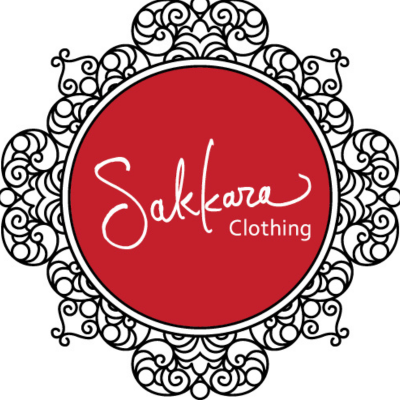Depending on what corners of the internet you hang out in, you may have heard the terms “slow fashion” and “fast fashion”. If you have any lingering questions about what these terms mean and why they matter, read on.

What Is Fast Fashion?
If “fast fashion” makes you think “fast food”, you’re on the right track. Fast fashion is to clothing what fast food is to cuisine. Both are mass produced to be quick, cheap, and convenient. Neither are particularly good for you.
Where fast food tempts us with the idea of a meal and a drink for under $10, fast fashion offers us the allure of a new Fall wardrobe for $200. While fast food taps into our cravings for salt, fat, and sugar, fast fashion taps into our craving to have something new and to feel cute, on trend, or stylish.
Beyond that, fast fashion also taps into our fears of being the opposite: ugly, frumpy or out of style. The constantly changing landscape of the fast fashion market means that what you purchased is unfashionable almost as soon as you walk out of the store.
Worried about being left behind, you keep returning to the store for new clothes. This creates an unending cycle of filling and purging your closet. It seems easy to justify: with how cheap the clothes are, what does it matter if you only wear them a few times?
This leads us to our next point: even if you’re not a slave to style trends, fast fashion is not a good investment. Because you’re expected to replace them every few weeks, the garments in these trendy stores are not made to last. Crafted hastily and poorly out of shoddy materials, they often fall apart or fade in the wash.
Thanks to this cheap construction, fast fashion not only wastes your money, it’s also bad for the environment. An alarming amount of textile waste ends up in our landfills. According to Brooklyn Fashion + Design Accelerator, America ‘generates 30.6 billion pounds of textile waste per year’, more than any other nation in the world.
Finally, fast fashion is often created in unethical and unsafe sweatshops in developing countries. These factories pay pitifully low wages, insist on long hours, sometimes even employing child labor. Earlier this year, an NGO (non-governmental organization) set up a show in Amsterdam that allowed shoppers to experience what it’s like to work in a sweat shop, as reported by Fashion United.
What Is Slow Fashion?
Just like its counterpart “slow food”, the “slow fashion” movement is the antithesis to everything we discussed above.
Slow fashion could more accurately be called…fashion. It’s the way things were done. Rather than a constant churn of new styles, slow fashion houses do only one or two new collections a year (either one annual collection, or a Spring/Summer and Fall/Winter collection).
One of the hallmarks of slow fashion is that it’s created conscientiously. Mindful of the sins of fast fashion, slow fashion designers strive to source sustainable fabrics and are ethical in their hiring.
Slow fashion businesses are a single person operation. They may work with contractors here in the US, or they may have a Fair Trade workshop overseas. For a more in-depth analysis of the benefits of slow fashion, see what Trusted Clothes has to say on the matter.
Many slow fashion designers also decrease textile waste in different ways. This includes efficient pattern layout, creating accessories out of scraps, and donating scrap fabric to schools and charities.
Slow fashion lasts. Fleeting trends are ignored in favor of timeless basics that are worn year after year. Many slow fashion designers gravitate towards solid colors or classic patterns such as stripes. The goal is to create a versatile line of clothing that are mixed, matched, and easily accessorized to express your own sense of style.
Why Sakkara Clothing & Costume Embraces Slow Fashion
At Sakkara Clothing & Costume, we create slow fashion for the street and festival wear market. Because we vend in person at many festivals and dance events in the Pacific Northwest, we see our customers year after year. We build a relationship with the people who love our work. We want them to be happy!
We design the sort of clothing we want to wear — yoga pants that last for years, shrugs and skirts that layer well for that unpredictable Pacific Northwest weather, and clothes that pack well for travel.
We also have our eye to the future, which is why we work with environmentally friendly fibers like organic cotton and bamboo, and upcycled textiles. Fibre2Fashion does a great job of explaining why bamboo is great for clothing, especially active wear.
Everything we design is sewn in the USA.
Slow fashion is about knowing what you’re buying and what sort of culture you’re supporting. We stand for handmade, ethical, long-lasting fashion. You can call that “slow fashion” for short.
Original article: Slow Fashion vs Fast Fashion.
